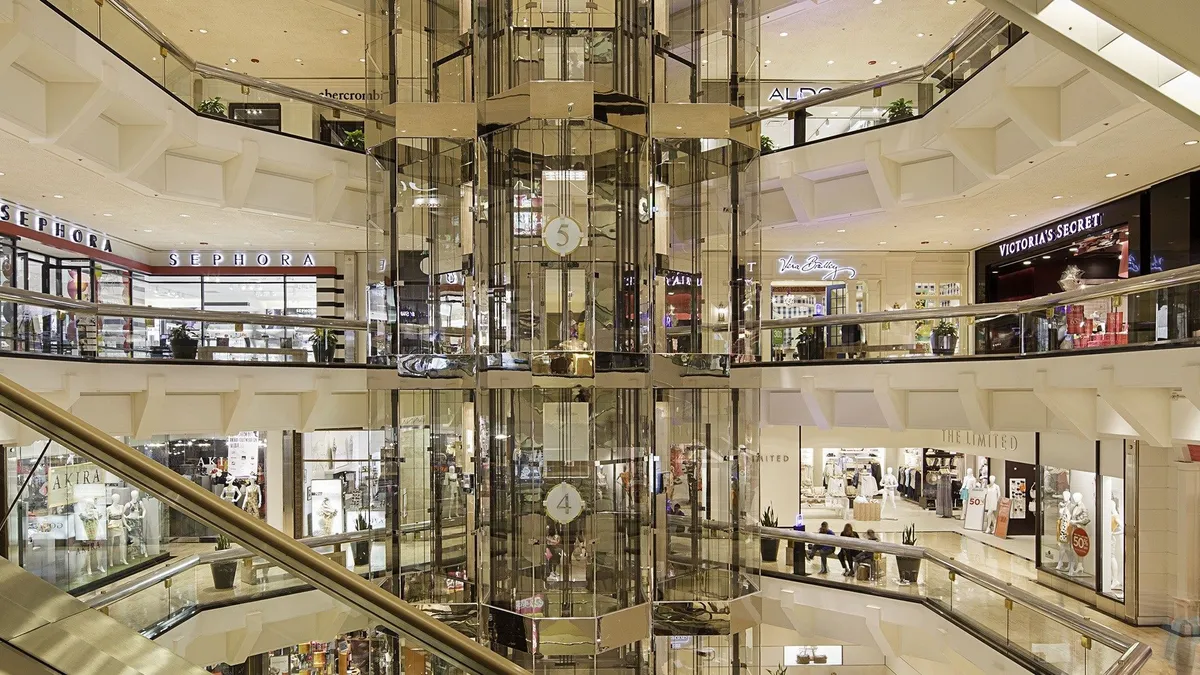Dive Brief:
-
General Growth Properties is amping up its retail operations with a "living lab" dubbed "In Real Life," in partnership with retail pop-up architecture company The Lionesque Group. The concept is "an immersive shopping experience that fosters the human connection between you and brands in today’s digital age within an omni-channel storefront," according to GGP’s Chicago-based Water Tower Place website.
-
It’s essentially a store that allows e-commerce retailers to serve mall customers. Participating retailers, which will also have access to data compiled from the brick-and-mortar visits, must be ready to drop-ship orders because inventory won’t be held on the spot, according to a report from Glossy.
-
The mall developer earlier this month reported Q2 net income of $126 million, or 13 cents per diluted share, down from $186 million, or 19 cents per diluted share, in the prior-year period. On a conference call with analysts after releasing that report, GGP CEO Sandeep Lakhmi Mathrani said the company will continue to stay the course when it comes to leases, but plans to add more non-retail tenants and to "prune the lower quality assets," according to a transcript from Seeking Alpha.
Dive Insight:
Major shifts in retail and a series of high-profile retail bankruptcies are contributing to a generally downbeat buzz about shopping malls, but that belies the reality that many shopping centers are thriving, including top malls like Chicago's Water Tower Place, according to GGP executives.
"[T]here is strong demand for our real estate from a wide and growing area of tenants," Mathrani told analysts last week. "We looked through the tenant list of new tenants this year and it's well over 100 new tenants, 317 new in count and the list is long... In addition, there are numerous e-commerce retailers planning to open stores. These are companies that have been operating for five to seven years on the internet and have sales of $25 million to $100 million. They are established brands seeking profitability and planning to achieve it with a brick-and-mortar presence."
The regional mall vacancy rate in the U.S. edged up 0.2% to 8.1% in the second quarter, up from 7.9% in Q1 and 7.9% from a year ago, largely due to the planned closures of Macy’s stores nationwide, according to data from real estate research firm Reis, cited by Calculated Risk. The rate is down from a cycle peak rate of 9.4% in Q3 2011. The vacancy rate for neighborhood and community malls, also known as strip malls, was 10.0% in the quarter, up from 9.9% last quarter, and up from 9.8% in the year-ago period. That measure is down from the peak rate of 11.1% in Q3 2011. The retail vacancy rate rose 0.1% in the quarter to 10%, but asking rents rose 0.4% in that time as new stores balanced out closures.
Still, GGP earlier this month reported that its A-rated centers account for 75% of its net operating income and drive the substantial amount of its business. "NOI is expected to grow nearly 4% this year," Mathrani also said. "NOI weighted sales per square foot increased 2.5% to $785 a square foot. Total sales excluding apparel increased 4.7%. Lease spreads are up 12%. NOI weighted lease spreads for the A portfolio is up 15% and occupancy is at 95%."
Traffic to the centers is also up, rising 1.4% year-to-date compared to the same period last year, as measured by cameras in GGP properties that count people as they enter the center, he said. "Parking lots are near capacity, so much so that we created an app to help find a parking space."
Some of the growth is from e-commerce retailers turning to much-maligned physical stores to reach more customers, and the "In Real Life" effort aims to capitalize on that. "[There are numerous e-commerce retailers planning to open stores," Mathrani noted. "These are companies that have been operating for five to seven years on the Internet and have sales of $25 million to $100 million. They are established brands seeking profitability and planning to achieve it with a brick-and-mortar presence."













